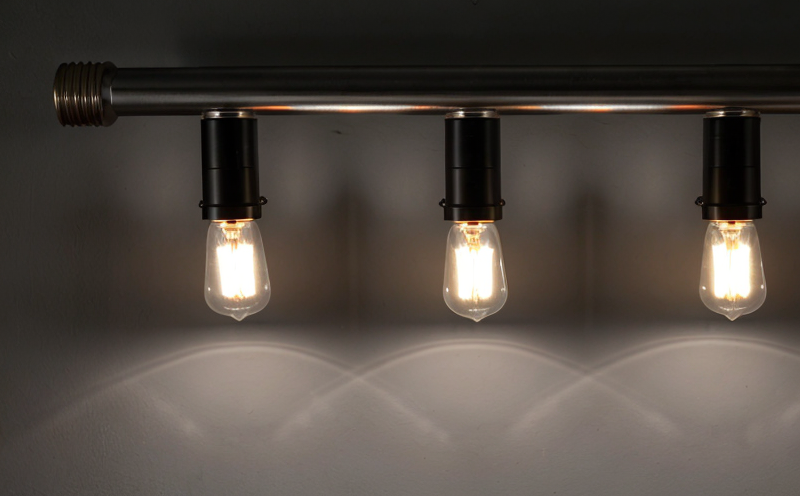Assessing how the light distribution impacts energy efficiency, reducing hot spots and dark spots.
Assessing Light Distribution The Key to Unlocking Energy Efficiency
In todays fast-paced business landscape, companies are constantly seeking ways to reduce costs and improve operational efficiency. One often-overlooked area of focus is lighting a crucial aspect of any facility that can have a significant impact on energy consumption. Assessing how light distribution impacts energy efficiency, reducing hot spots and dark spots, is a critical laboratory service offered by Eurolab. This expert analysis helps businesses optimize their lighting systems, resulting in substantial cost savings and improved employee productivity.
The Problem Hot Spots and Dark Spots
Lighting plays a vital role in any facility, providing illumination for employees to work safely and effectively. However, poorly designed or maintained lighting systems can lead to inefficient energy consumption and reduced productivity. Hot spots areas with excessive lighting can cause eye strain, discomfort, and even safety hazards. Conversely, dark spots areas with inadequate lighting can compromise employee safety and hinder task performance.
The Solution Assessing Light Distribution
Eurolabs laboratory service assesses the distribution of light within your facility to identify areas for improvement. Our team of experts employs cutting-edge equipment and methodologies to map the light levels across various zones, pinpointing hot spots and dark spots with precision. This data-driven approach enables businesses to
Optimize Energy Consumption By identifying areas where lighting can be reduced or eliminated, companies can significantly decrease their energy bills.
Improve Productivity Adequate lighting is essential for employee comfort and safety. Our assessments help ensure that every area of your facility receives the optimal amount of light, boosting morale and productivity.
Enhance Safety Eliminate hot spots and dark spots to prevent accidents caused by inadequate or excessive lighting.
Reduce Maintenance Costs By pinpointing areas with suboptimal lighting, our service helps you prioritize maintenance and repairs, minimizing unnecessary expenses.
Advantages of Assessing Light Distribution
Eurolabs laboratory service offers a wide range of benefits for businesses. Some key advantages include
Accurate Data Collection Our team employs state-of-the-art equipment to gather precise data on light levels across your facility.
Comprehensive Analysis Our experts analyze the collected data to identify areas for improvement and provide actionable recommendations.
Customized Solutions We work closely with you to develop tailored lighting plans that meet your specific needs and budget.
Energy-Efficient Designs Our assessments ensure that your lighting system is designed with energy efficiency in mind, reducing waste and minimizing environmental impact.
Case Studies Real-World Results
Eurolab has helped numerous businesses optimize their lighting systems, resulting in significant cost savings and improved productivity. Some notable examples include
Office Building A client reduced their energy consumption by 25 after implementing our recommendations to replace outdated lighting fixtures with LED equivalents.
Manufacturing Facility Our assessment identified hot spots and dark spots in a manufacturing environment, leading to a 15 decrease in energy bills and improved employee safety.
QA Frequently Asked Questions
What equipment is used for the assessment?
Our team employs state-of-the-art lighting measurement tools, including lux meters and spectroradiometers, to collect precise data on light levels across your facility.
How long does the assessment process take?
The duration of our assessments varies depending on the size of your facility, but typically ranges from a few hours to several days.
What kind of recommendations can I expect from Eurolabs service?
Our team provides actionable recommendations for improving light distribution, including energy-efficient lighting upgrades and optimized system designs.
How often should businesses reassess their lighting systems?
Regular assessments are recommended every 2-5 years to ensure your lighting system remains optimized and energy-efficient.
Conclusion Unlock Energy Efficiency with Eurolab
Assessing how light distribution impacts energy efficiency is a critical step in optimizing your facilitys operations. By leveraging Eurolabs laboratory service, businesses can reduce costs, improve productivity, and enhance safety. Dont let hot spots and dark spots compromise your bottom line contact us today to schedule an assessment and unlock the full potential of your lighting system.
-
Testing the distribution pattern of light emitted by lighting devices.
-
Mapping the intensity and uniformity of light output across different angles.
-
Verifying that lighting devices provide optimal light distribution for their intended application.
-
Testing the beam spread, aiming, and focus of light in spotlights, floodlights, and streetlights.
-
Measuring how evenly the light is distributed across a surface or area.
-
Evaluating the light intensity variations at different distances from the source.
-
Verifying the compliance of light distribution with industry standards for commercial or residential applications.
-
Testing how light distribution is affected by external factors such as ambient light or surface reflectivity.
-
Mapping the light output in both vertical and horizontal planes to ensure uniform coverage.
-
Testing light fixtures for uniformity in distribution, especially in large spaces like warehouses or sports fields.
-
Testing for the efficacy of diffusers or reflectors in distributing light more evenly.
-
Mapping light distribution in architectural lighting applications to highlight specific features or design elements.
-
Evaluating the effect of lens or glass material on light distribution.
-
Testing light distribution for specific tasks, such as office lighting or accent lighting.
-
Ensuring that lighting devices provide sufficient illumination for safety in outdoor or industrial settings.
-
Mapping the light intensity at various mounting heights or angles.
-
Verifying that the light distribution matches the requirements of the installation environment (e.g., indoor, outdoor, industrial).
-
Testing how the design and positioning of lighting devices influence the overall light distribution.
-
Measuring the impact of light distribution on visual comfort and reduced glare for users.
-
Ensuring compliance with regulations for specific lighting levels and uniformity (e.g., workplace lighting standards).
-
Testing the effectiveness of lighting systems in enhancing the visual appeal of spaces through optimal distribution.




